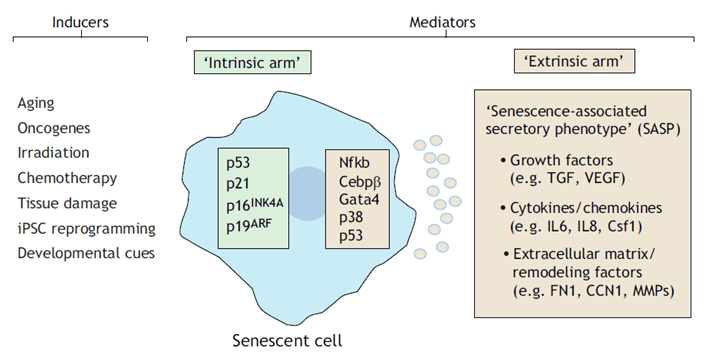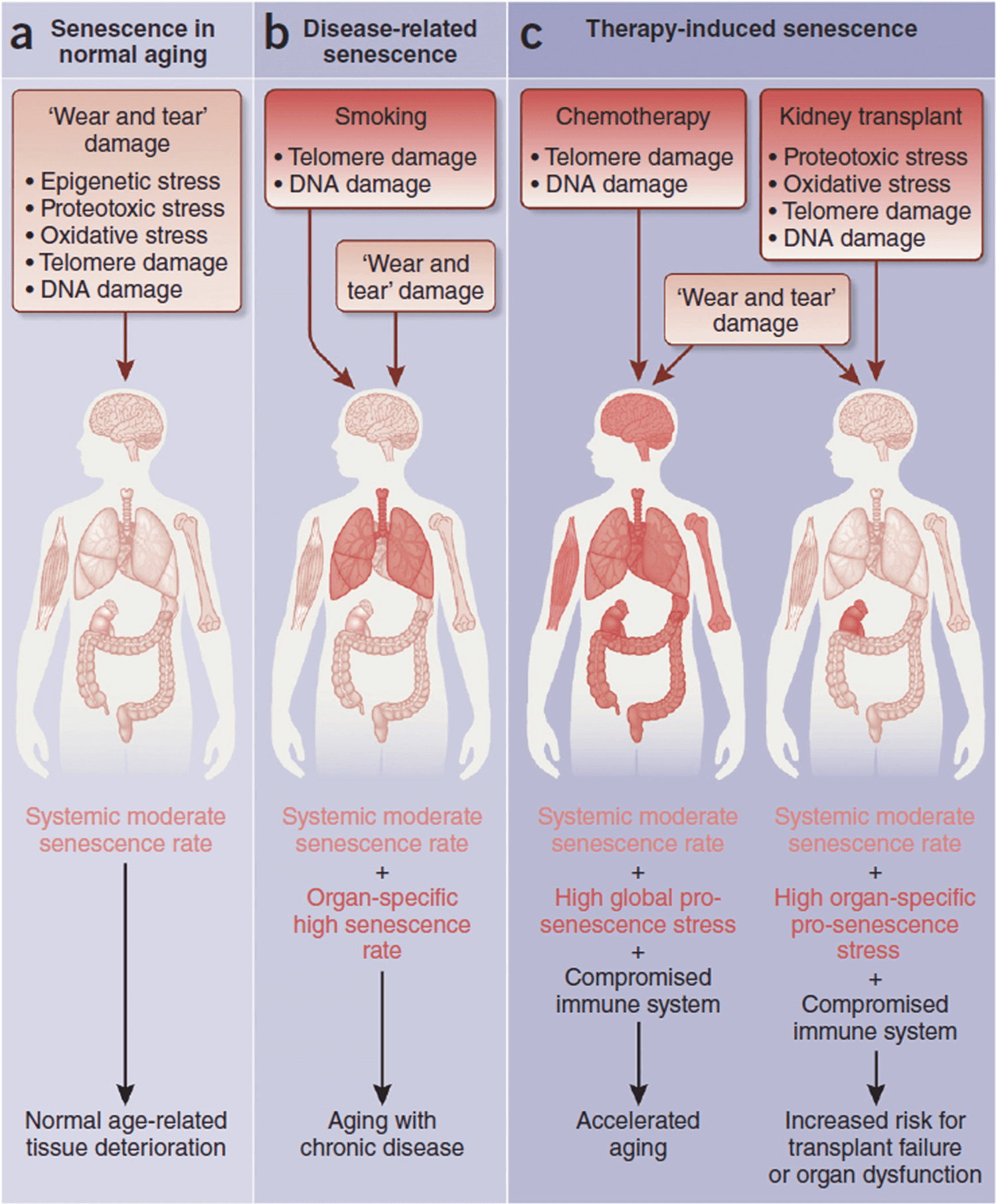Cellular Senescence Assays
At Creative Bioarray, our professional scientific team can provide a wide selection of cellular senescence assays based on our advanced platform. We can assist your foundamental research and accelerate your drug development projects.
Introduction of Cellular Senescence
The life course of cells must go through several stages, including undifferentiated state, differentiation, growth, maturity, senescence and death. Cellular senescence is one of the most fundamental cell behaviours, and is also considered to play a critical role in the regulation of cell life. The dynamic balance of cell senescence, cell death and the growth of new cells is the basis of maintaining the normal life activities of organisms.
Cellular senescence is a highly coordianted and programmed cellular state comprising a highly stable and irreversible cell cycle arrest in response to stress or damage. Senescent cells have several accompanying phenotypes, such as increased cell size, changes in morphology, altered gene expression patterns, expression of senescence-associated beta-galactosidase (SA-β-gal), and higher levels of DNA damage. Many studies have uncovered the functional role of cellular senescence in embryonic development, tissue repair and regeneration, reprogramming, and aging.
 Figure 1. Overview of the cellular senescence program. (Rhinn M, et al., 2019)
Figure 1. Overview of the cellular senescence program. (Rhinn M, et al., 2019)
Cellular senescence is a physiological phenomenon that has both beneficial and detrimental consequences. It is a promising strategy to prevent tumorigenesis. However, the increasingly accumulated senescent cells may contribute to the pathogenesis of age-related diseases. Therefore, it is of great significance to reveal the mechanism of cellular senescence in the development of novel therapeutics for cancer and age-related diseases.
 Figure 2. Senescence in aging, age-related diseases and disease-related treatments. (Childs B G, et al., 2015)
Figure 2. Senescence in aging, age-related diseases and disease-related treatments. (Childs B G, et al., 2015)
Cellular Senescence Assays Available at Creative Bioarray
We provide various options of assays for the induction and assessment of cellular senescence in various cell types and models.
Induction of Cellular Senescence
Continual passaging, DNA damage, oncogenes and radiation are usually used to induce cellular senescence. Inducing cellular senescence is helpful to study the mechanism of cell senescence, reveal the pathogenesis of related diseases, and develop new drugs.
SA-β-Gal Staining Assay
Increased SA-β-gal activity is a characterized change in senescent cells. SA-β-gal staining assay is an efficient method to assess cellular senescence. The senescent cells with blue color can be easily scored under bright-field microscopy.
Senescence Marker Detection Assay
Analysing the mRNA or protein levels of senescence markers, such as γ-H2AX, p16, p21, p53, Ki67 and lamin B1, can quantitatively assess cellular senescence. In different biological contexts, various senescence markers can be used individually or in combination.
Senescence-Associated Heterochromatin Foci Detection Assay
The detection of senescence-associated heterochromatin foci (SAHF), specialized domains of facultative heterochromatin which contribute to the irreversible cell cycle exit in senescent cells, is a valuable tool to distinct heterochromatin changes associated with senescence.
Senescence-Associated Secretory Phenotype Detection Assay
Senescence-associated secretory phenotype (SASP) refers to the phenotype that senescent cells secrete high levels of extracellular modulators, such as chemokines, inflammatory cytokines, growth factors, immune modulators, and proteases. These secreted proteins can influence aging and tumorigenesis.
Telomere Length Assay
Telomere, a protective structure located at the end of eukaryotic chromosomes, is important to maintain genome stability. Telomere shortening is the result of cellular replication, which leads to a permanent cell cycle arrest. It is a frequently used biomarker of cellular senescence.
Creative Bioarray provides our customers with high-quality and reliable cellular senescence assays to meet specific needs with fast turnaround time and competitive price. We also supply cellular senescence staining kits. If you need more detailed information, please feel free to contact us. We look forward to cooperating with you.
References:
- Rhinn M, et al. Cellular senescence in development, regeneration and disease. Development, 2019, 146(20): dev151837.
- Childs B G, et al. Cellular senescence in aging and age-related disease: from mechanisms to therapy. Nature medicine, 2015, 21(12), pp: 1424-1435.
- Ovadya Y, & Krizhanovsky V. Strategies targeting cellular senescence. The Journal of clinical investigation, 2018, 128(4), pp: 1247-1254.
For research use only. Not for any other purpose.

 Figure 1. Overview of the cellular senescence program. (Rhinn M, et al., 2019)
Figure 1. Overview of the cellular senescence program. (Rhinn M, et al., 2019)
 Figure 2. Senescence in aging, age-related diseases and disease-related treatments. (Childs B G, et al., 2015)
Figure 2. Senescence in aging, age-related diseases and disease-related treatments. (Childs B G, et al., 2015)
